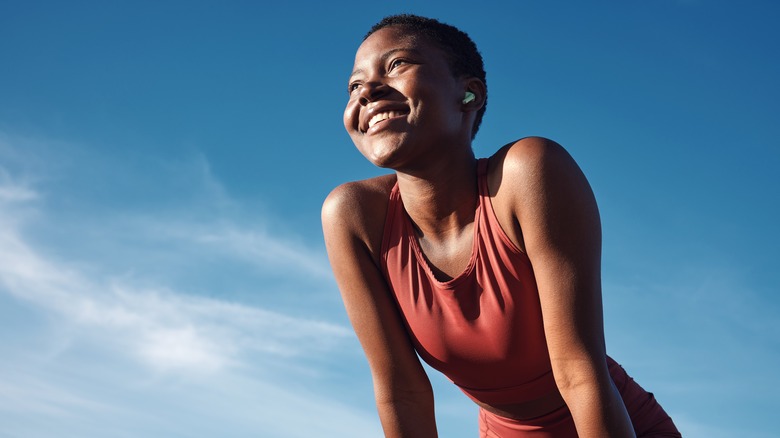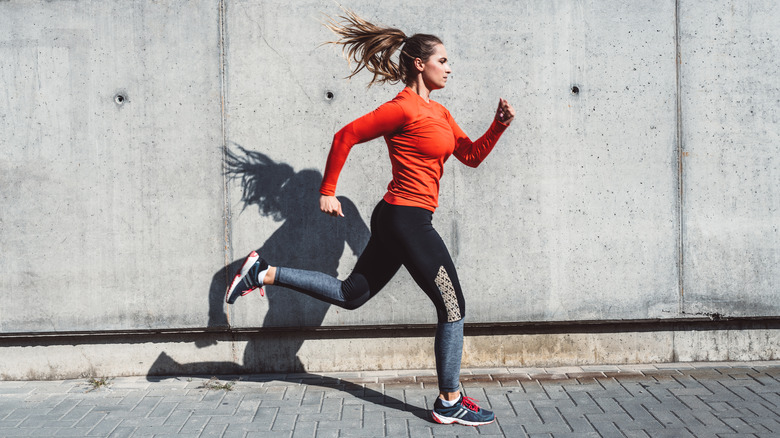Turns Out This Popular Exercise Burns The Most Calories
Whatever exercise method you choose — whether it's aerobic, strength training, circuit, or flexibility oriented — you burn some amount of calories with physical exertion. That's always the plus of getting out and getting your body moving.
But have you ever wondered what exercise burns the most amount of calories? Apparently, it's a popular and very easily accessible form of working out — running. You can burn as much as 206 calories every 30 minutes by just getting out of your house and jogging at an even and slow pace. This statistic is for someone who weighs 130 pounds, per the American Council on Exercise (ACE) calculator. In comparison, hatha yoga/stretching burned an estimated 73 calories and normal weight training 88.
A few different factors determine how many calories you burn while you work out, like your heart rate training zone (the intensity at which you're exercising), your resting heart rate, weight, the kind of exercise you're doing, muscle mass, and age. But cardio workouts generally stack up high and running, in particular, tops the list, because it gets your heart pumping a lot faster. You're also working out pretty much most of the muscles in your body when you sprint from one point to another. If you're looking to lose weight through exercise, you now know where to start. And since running is a weight-bearing exercise, it's also great for building strong bones. Other benefits include stronger muscles and better heart health.
Things to keep in mind when running
Calorie burning benefits aside, when you first taking up running as an exercise, it's important to learn the basics, start correctly, and also know about potential dangers of running. If you're over 40, overweight, or have underlying health issues, consult your doctor beforehand. Excessive running comes with its risks too, like runner's knee, skin chafing, and heart complications.
To begin with, make sure you have the right clothes and shoes. Moisture-wicking comfortable clothes, a good sports bra, and sunscreen are musts. While standard tennis shoes may work for the first few times, you may want to invest in a good quality pair of running shoes with adequate cushioning and support to avoid injury. Next comes picking the day to start, as well as your route. Avoiding busy streets and choosing more solitary routes might make you feel less self-conscious and more confident about getting into the exercise. Make sure you warm up before you start.
It's also important to start slow and gradually work your way up to longer distances and higher intensity. Muscle soreness (delayed onset muscle soreness or DOMS) after the first day is common so take it at your own pace, even if that means skipping a day or two in between and picking it up later. Pay attention to your breathing and slow down if you're gasping for air. A nice and even controlled pace is what you're aiming for. At the end of the day, running is a great way to be outdoors and enjoy nature too.


